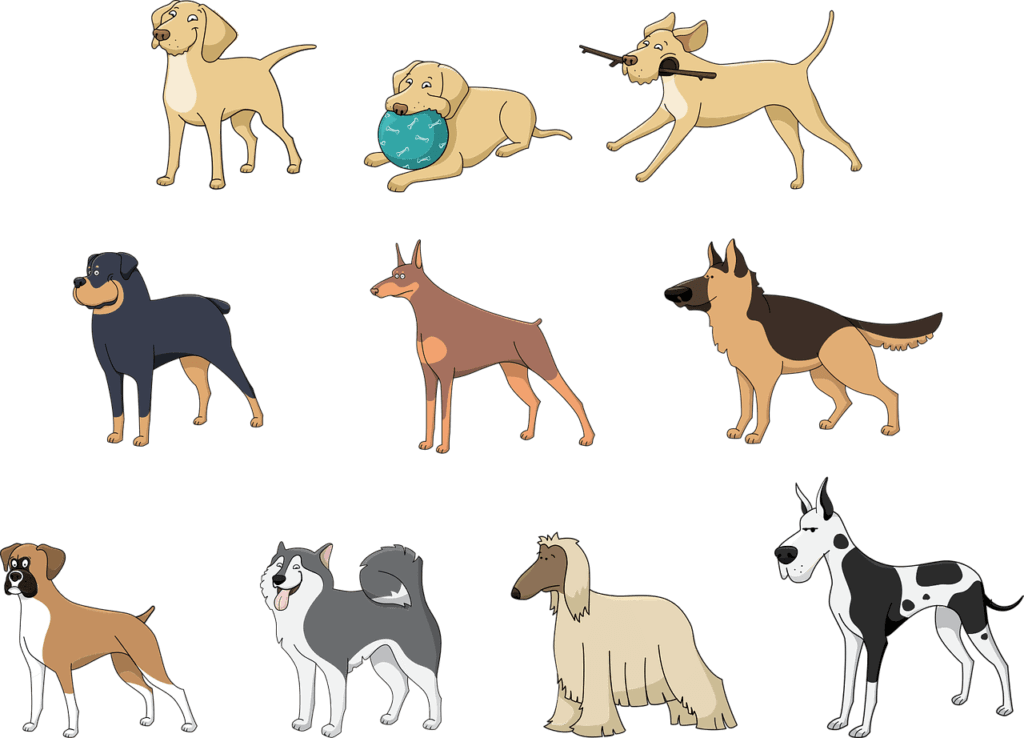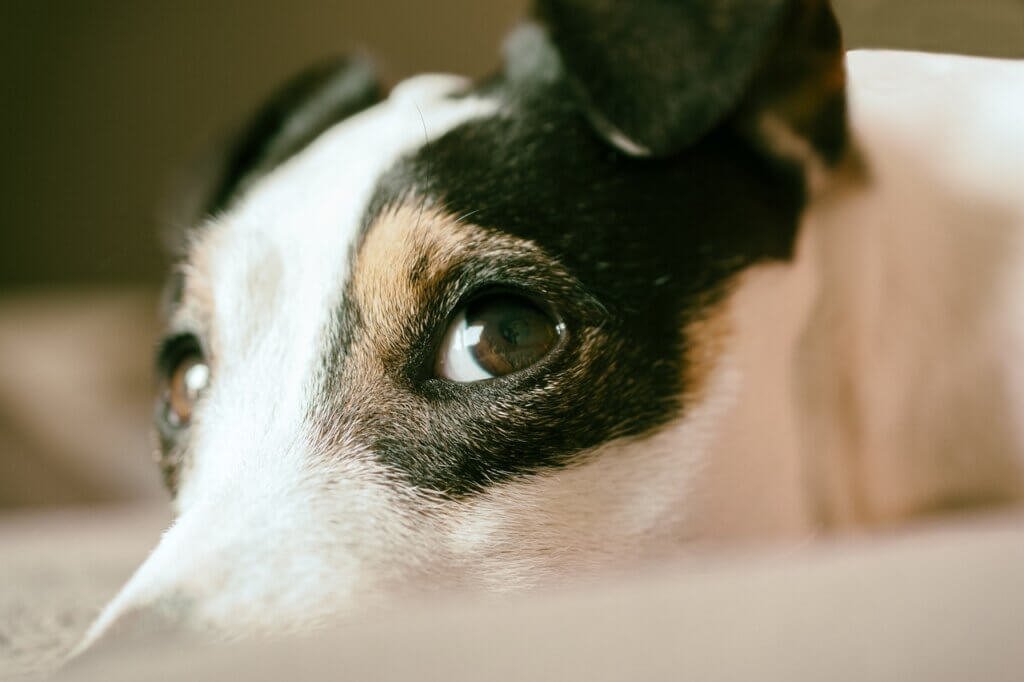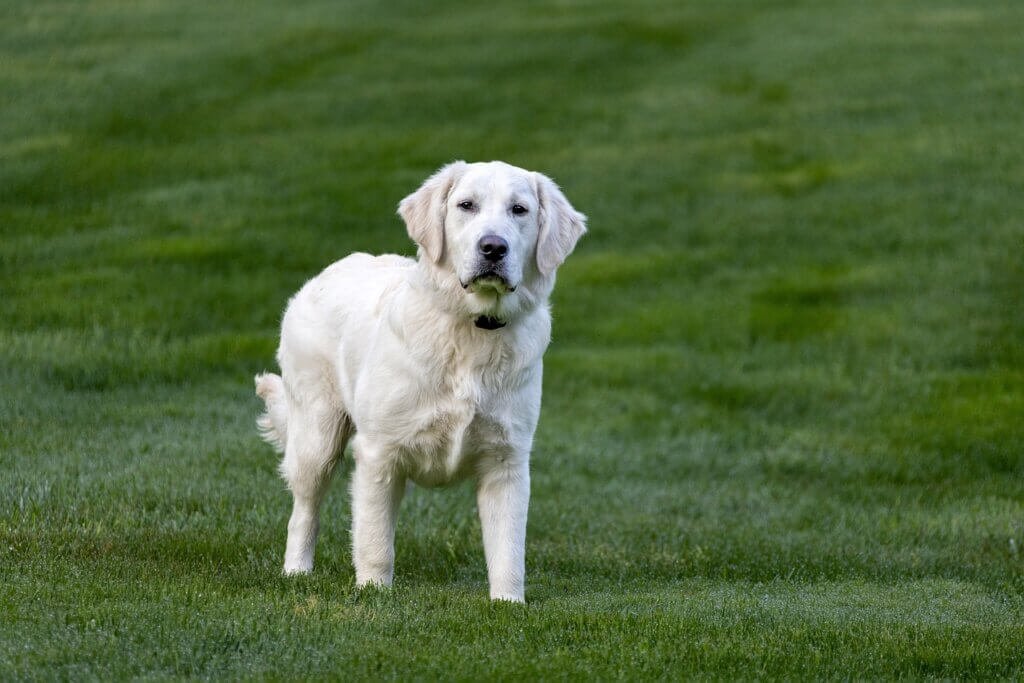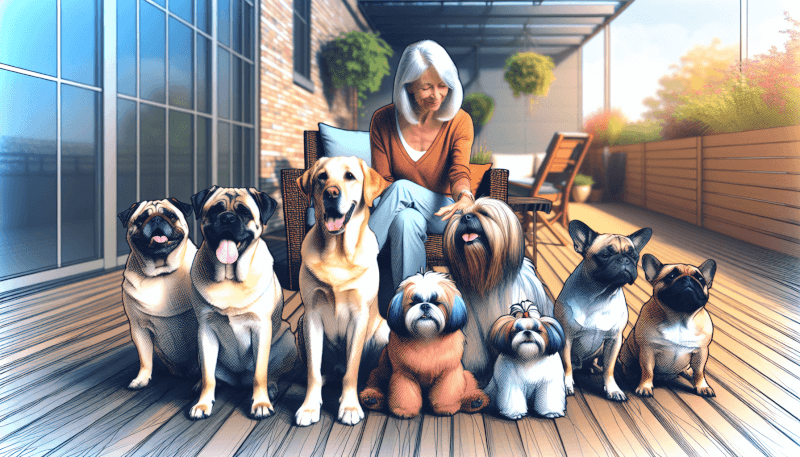Living in a community where you are surrounded by neighbors can be both exciting and challenging, especially when it comes to owning a dog. You want a four-legged companion that will not only fit into your own lifestyle but also gel well with others in your community. In this article, we will explore some of the most popular dog breeds that are known to thrive in community living. These breeds possess friendly and sociable personalities, making them perfect for forming lasting bonds with both humans and other dogs. Whether you’re a pet owner in a bustling city or a close-knit suburban neighborhood, read on to discover the ideal furry friend for your community living adventures.

Golden Retriever
Temperament and Adaptability
Golden Retrievers are known for their friendly and reliable temperament, making them a great choice for community living. They are highly adaptable dogs that can easily adjust to various living situations, whether it’s a small apartment or a larger home. Golden Retrievers are typically very social and enjoy being around people and other animals, making them an excellent companion for families or individuals.
Trainability
Golden Retrievers are highly trainable dogs and are eager to please their owners. They are intelligent and can easily learn new commands and tricks with consistency and positive reinforcement. Their trainability makes them an ideal choice for both first-time dog owners and experienced trainers.
Socialization
Socialization is crucial for Golden Retrievers to ensure they develop into well-rounded and friendly dogs. They thrive on social interaction and should be exposed to a variety of people, animals, and environments from a young age. Proper socialization helps prevent behavioral issues and ensures that the Golden Retriever becomes a friendly and confident member of the community.
Exercise and Energy Level
Golden Retrievers are an active breed and require regular exercise to keep both their mind and body healthy. They enjoy activities such as walking, running, playing fetch, and swimming. A daily exercise routine should include both physical activities and mental stimulation to keep them engaged and prevent boredom.
Grooming Needs
Golden Retrievers have a thick double coat that requires regular grooming to keep it clean and healthy. They shed moderately throughout the year and experience heavier shedding during certain seasons. Regular brushing helps minimize shedding and keeps their coat free from tangles and mats. Bathing should be done as needed, typically every few months, to keep their coat and skin in good condition.
Size and Space Requirements
Golden Retrievers are a medium to large-sized breed. Males typically weigh between 65 to 75 pounds, while females weigh between 55 to 65 pounds. In terms of height, males range from 23 to 24 inches, while females are slightly smaller at 21.5 to 22.5 inches. Due to their size, Golden Retrievers require a spacious living area with enough room for them to move around comfortably. They benefit from access to a fenced yard where they can play and expend their energy.
Labrador Retriever
Temperament and Adaptability
Labrador Retrievers are known for their friendly and outgoing temperament, which makes them one of the most popular breeds for community living. They are highly adaptable dogs and can thrive in various living conditions, whether it’s an apartment or a larger house. Labradors are excellent family pets and get along well with children, other dogs, and even cats.
Trainability
Labrador Retrievers are intelligent and eager to please, which makes them highly trainable dogs. They respond well to positive reinforcement and enjoy learning new commands and tricks. Their trainability, combined with their friendly nature, makes them a top choice for therapy and assistance dog work.
Socialization
Socialization is important for Labrador Retrievers to ensure they develop into well-rounded and well-behaved dogs. They are naturally social and enjoy being around people and other animals. Early socialization helps prevent any potential behavioral issues and helps them become confident and friendly members of the community.
Exercise and Energy Level
Labrador Retrievers are a highly active breed and require plenty of exercise to keep them physically and mentally stimulated. They thrive on activities such as walking, running, swimming, and playing fetch. Daily exercise is essential for them to prevent boredom and potential destructive behaviors. Labs make great companions for active individuals or families who can provide them with ample exercise opportunities.
Grooming Needs
Labrador Retrievers have a short and dense coat that is relatively easy to maintain. They shed moderately throughout the year and more heavily during shedding seasons. Regular brushing helps remove loose hair and keeps their coat looking its best. Labs should be bathed as needed to keep them clean and fresh.
Size and Space Requirements
Labrador Retrievers are large-sized dogs, with males weighing between 65 to 80 pounds and females weighing between 55 to 70 pounds. When it comes to height, males typically range from 22.5 to 24.5 inches, while females are slightly smaller at 21.5 to 23.5 inches. Due to their size, Labs require a decent amount of space to move around comfortably. Access to a fenced yard where they can play and burn off energy is beneficial for this breed.
French Bulldog
Temperament and Adaptability
French Bulldogs have a friendly and affectionate temperament, making them an excellent choice for community living. They are adaptable dogs that can thrive in both small apartments and larger houses. Frenchies are known for their love of human companionship and their ability to get along well with people from all walks of life.
Trainability
French Bulldogs are intelligent and willing to please, which makes them generally easy to train. However, they can also be stubborn at times, so consistent training methods and positive reinforcement are important. Their trainability is enhanced through patience and using rewards-based techniques.
Socialization
Proper socialization is crucial for French Bulldogs to ensure they develop into well-behaved and confident dogs. They should be exposed to various people, animals, and environments from a young age. Early socialization helps prevent any potential behavioral issues, such as aggression or shyness, and ensures that Frenchies can live harmoniously in a community.
Exercise and Energy Level
French Bulldogs are a compact and relatively low-energy breed. They enjoy shorter walks and play sessions and are not known for being excessively active. However, they still need regular exercise to maintain a healthy weight and prevent them from becoming overweight. Moderate exercise, such as daily walks or indoor playtime, is typically sufficient for keeping Frenchies happy and healthy.
Grooming Needs
French Bulldogs have a short and smooth coat that is easy to groom. They shed minimally, which means there is less hair to clean up around the house. Regular brushing helps remove loose hair and keeps their coat looking shiny and healthy. Frenchies are prone to wrinkles on their face, so it’s essential to keep those areas clean and dry to prevent any skin irritation.
Size and Space Requirements
French Bulldogs are a small-sized breed, with males weighing between 16 to 28 pounds and females weighing between 16 to 24 pounds. In terms of height, males typically range from 11 to 12 inches, while females are slightly smaller at 10 to 11 inches. Due to their compact size, French Bulldogs can comfortably live in smaller living spaces such as apartments or condominiums. They are not known for being excessively active indoors, so as long as they have room to move around, they can adapt well to community living.
Bulldog
Temperament and Adaptability
Bulldogs have a calm and friendly temperament, making them a great choice for community living. They are generally easygoing dogs that get along well with people of all ages and other animals. Bulldogs are known for their affectionate nature and love being part of a family.
Trainability
Bulldogs have a reputation for being a bit stubborn, which can sometimes make training a bit challenging. However, with patience, consistency, and positive reinforcement techniques, Bulldogs can still be trained effectively. It’s important to find training methods that suit their individual personality and motivate them to learn.
Socialization
Socialization is crucial for Bulldogs to ensure they grow up to be well-behaved and friendly dogs. They should be exposed to a variety of people, animals, and environments from a young age. Proper socialization helps prevent any potential behavioral issues, such as aggression or fearfulness, and enables Bulldogs to live harmoniously in a community.
Exercise and Energy Level
Bulldogs are not an overly active breed and have low exercise needs. They enjoy shorter walks and play sessions and are generally content with moderate physical activity. Bulldogs can easily adapt to a more relaxed lifestyle, making them suitable for individuals or families who do not have a lot of time for extensive exercise.
Grooming Needs
Bulldogs have a short and smooth coat that requires minimal grooming. They shed moderately throughout the year, so regular brushing helps remove loose hair and keep their coat looking tidy. Bulldogs have facial wrinkles that need special attention to prevent any irritation or infections. It’s important to clean and dry their wrinkles regularly to maintain good skin health.
Size and Space Requirements
Bulldogs are a medium-sized breed, with males weighing between 50 to 55 pounds and females weighing between 40 to 50 pounds. In terms of height, males typically range from 14 to 15 inches, while females are slightly smaller at 12 to 14 inches. Bulldogs can adapt well to both smaller living spaces, such as apartments, and larger homes. They are not overly active indoors and prefer a calm and relaxed environment.

Beagle
Temperament and Adaptability
Beagles have a friendly and outgoing temperament that makes them a popular choice for community living. They are generally good-natured dogs that get along well with people of all ages and other animals. Beagles are known for their happy-go-lucky attitude and their love of being part of a family.
Trainability
Beagles are intelligent but can also be a bit stubborn, which can sometimes make training a challenge. However, with patience, consistency, and positive reinforcement methods, Beagles can be trained effectively. It’s important to find training techniques that make learning fun and engaging for them.
Socialization
Proper socialization is important for Beagles to ensure they grow up to be well-adjusted and friendly dogs. They should be exposed to various people, animals, and environments from a young age. Early socialization helps prevent any potential behavioral issues, such as aggression or shyness, and enables Beagles to be confident and sociable members of the community.
Exercise and Energy Level
Beagles are an active breed with moderate exercise needs. They have a lot of energy to burn and enjoy long walks, playtime, and activities that stimulate their senses, such as scent work or puzzle toys. Regular exercise is essential to keep them physically and mentally stimulated, as lack of exercise can lead to behavioral problems.
Grooming Needs
Beagles have a short and dense coat that is relatively low-maintenance. They shed moderately throughout the year, so regular brushing helps remove loose hair and keep their coat looking tidy. Beagles are known for their keen sense of smell, so it’s important to regularly check and clean their ears to prevent any potential ear infections.
Size and Space Requirements
Beagles are a medium-sized breed, with males weighing between 22 to 25 pounds and females weighing between 20 to 23 pounds. In terms of height, males typically range from 14 to 16 inches, while females are slightly smaller at 13 to 15 inches. Beagles can adapt well to both smaller living spaces, such as apartments, and houses with fenced yards. They enjoy exploring their surroundings, so having access to outdoor space where they can sniff and explore is beneficial for their well-being.
Poodle
Temperament and Adaptability
Poodles are known for their intelligence and friendly demeanor, making them a great choice for community living. They are adaptable dogs that can thrive in various living conditions, whether it’s an apartment or a larger home. Poodles are highly sociable and enjoy being around people and other animals, making them an excellent companion for families or individuals.
Trainability
Poodles are one of the most intelligent dog breeds and are highly trainable. They excel in various activities, such as obedience, agility, and even therapy work. Poodles love to learn new commands and tricks and are eager to please their owners. Their trainability, combined with their friendly nature, makes them a top choice for many dog owners.
Socialization
Socialization is vital for Poodles to ensure they develop into well-rounded and confident dogs. They should be exposed to different people, animals, and environments from a young age. Proper socialization helps prevent any potential behavioral issues, such as shyness or fearfulness, and ensures that Poodles can live harmoniously within a community.
Exercise and Energy Level
Poodles are an active breed that requires regular exercise to keep them physically and mentally stimulated. They enjoy activities such as walking, running, swimming, and playing. Poodles excel in various dog sports and games that challenge their intelligence. Daily exercise and mental stimulation are important for Poodles to prevent boredom and potential behavioral issues.
Grooming Needs
Poodles have a dense and curly coat that requires regular grooming to keep it in good condition. Their coat is low-shedding and considered hypoallergenic, making them a popular choice for individuals with allergies. Depending on the desired look, Poodles may require professional grooming every few weeks to maintain their coat length and style. Regular brushing at home is necessary to prevent matting and keep their coat clean.
Size and Space Requirements
Poodles are a medium to large-sized breed, depending on the variety. Standard Poodles are the largest, with males typically weighing between 45 to 70 pounds and females weighing between 45 to 60 pounds. Miniature Poodles are smaller, with males weighing between 10 to 15 pounds and females weighing between 10 to 15 pounds. Toy Poodles are the smallest, with males and females weighing under 10 pounds. Poodles can adapt well to different living spaces, but it’s important to consider their size and exercise needs when choosing a suitable home.

Boxer
Temperament and Adaptability
Boxers have a friendly and playful temperament, making them a popular choice for community living. They are highly adaptable dogs that can thrive in various living conditions, whether it’s an apartment or a larger home. Boxers are known for their affectionate nature and their love for being part of a family.
Trainability
Boxers are intelligent and eager to please, which makes them relatively easy to train. However, they can also be strong-willed at times, so consistent and positive training methods are essential. Boxers respond well to reward-based training and enjoy learning new commands and tricks.
Socialization
Proper socialization is important for Boxers to ensure they develop into well-behaved and friendly dogs. They should be exposed to various people, animals, and environments from a young age. Early socialization helps prevent any potential behavioral issues, such as aggression or fearfulness, and enables Boxers to be confident and sociable members of the community.
Exercise and Energy Level
Boxers are an active and energetic breed that requires plenty of exercise to keep them physically and mentally stimulated. They enjoy activities such as long walks, jogging, and playtime in a secure, fenced area. Regular exercise is essential for Boxers to prevent them from becoming bored or restless, which can lead to behavioral problems.
Grooming Needs
Boxers have a short and smooth coat that is relatively low-maintenance. They shed moderately throughout the year, so regular brushing helps remove loose hair and keeps their coat looking tidy. Boxers are prone to certain skin allergies, so it’s important to keep their coat clean and free from any irritants.
Size and Space Requirements
Boxers are a medium-sized breed, with males weighing between 65 to 80 pounds and females weighing between 50 to 65 pounds. In terms of height, males typically range from 23.5 to 25 inches, while females are slightly smaller at 21.5 to 23.5 inches. Boxers require a decent amount of space to move around comfortably, both indoors and outdoors. Access to a secure, fenced yard where they can run and play is beneficial for their exercise and mental stimulation.
Cavalier King Charles Spaniel
Temperament and Adaptability
Cavalier King Charles Spaniels have a friendly and affectionate temperament, making them an excellent choice for community living. They are highly adaptable dogs that can thrive in small apartments or larger homes. Cavaliers form strong bonds with their owners and enjoy being part of a family.
Trainability
Cavalier King Charles Spaniels are intelligent and generally easy to train. They respond well to positive reinforcement and enjoy learning new commands and tricks. Cavaliers are eager to please their owners and thrive in training environments that are fun and rewarding.
Socialization
Socialization is crucial for Cavalier King Charles Spaniels to ensure they grow up to be well-rounded and friendly dogs. They should be exposed to various people, animals, and environments from a young age. Proper socialization helps prevent any potential behavioral issues and ensures that Cavaliers can interact well with other dogs and people in the community.
Exercise and Energy Level
Cavalier King Charles Spaniels have moderate exercise needs and enjoy daily walks and play sessions. They are not an overly active breed but still require regular physical activity to keep them healthy and prevent weight gain. Cavalier King Charles Spaniels enjoy human companionship, so exercise time is also an opportunity for them to bond with their owners.
Grooming Needs
Cavalier King Charles Spaniels have a long and silky coat that requires regular grooming to keep it looking its best. They shed moderately and require frequent brushing to prevent tangles and mats. Regular bathing is also necessary to keep their coat clean and smelling fresh.
Size and Space Requirements
Cavalier King Charles Spaniels are a small-sized breed, with males and females weighing between 13 to 18 pounds. In terms of height, both males and females typically range from 12 to 13 inches. Due to their small size, Cavaliers can comfortably live in smaller living spaces such as apartments or condominiums. They enjoy being close to their owners and do not require a large amount of outdoor space, although access to a secure area for potty breaks and short walks is necessary.

Dachshund
Temperament and Adaptability
Dachshunds have a lively and friendly temperament that makes them a popular choice for community living. They are highly adaptable dogs that can thrive in various living conditions, whether it’s an apartment or a larger house. Dachshunds are known for their affectionate nature and their ability to form strong bonds with their owners.
Trainability
Dachshunds are intelligent but can be independent and stubborn at times, which can present training challenges. However, with patience, consistency, and positive reinforcement, Dachshunds can still be trained effectively. It’s important to keep training sessions interesting and engaging to keep them motivated.
Socialization
Socialization is crucial for Dachshunds to ensure they develop into well-behaved and friendly dogs. They should be exposed to various people, animals, and environments from a young age. Proper socialization helps prevent any potential behavioral issues, such as aggression or fearfulness, and enables Dachshunds to be confident and sociable members of the community.
Exercise and Energy Level
Dachshunds have moderate exercise needs and enjoy daily walks and playtime. They have a lot of energy packed into their small bodies and benefit from regular physical activity to keep them physically and mentally stimulated. Daily exercise helps prevent obesity and the development of any destructive behaviors.
Grooming Needs
Dachshunds have a short and smooth coat that is relatively low-maintenance. They shed moderately and require regular brushing to remove loose hair and keep their coat looking tidy. Paying attention to their long ears is important to prevent any potential ear infections, as Dachshunds are prone to ear problems.
Size and Space Requirements
Dachshunds are a small-sized breed, with miniature varieties being even smaller. Standard Dachshunds typically weigh between 16 to 32 pounds, while miniature Dachshunds generally weigh between 9 to 11 pounds. In terms of height, standard Dachshunds range from 8 to 9 inches, while miniature Dachshunds are slightly smaller at 5 to 6 inches. Due to their small size, Dachshunds can comfortably live in smaller living spaces such as apartments or houses with limited outdoor space. However, they still require regular exercise and mental stimulation to prevent boredom and potential behavioral issues.
Chihuahua
Temperament and Adaptability
Chihuahuas have a bold and confident temperament, making them a great choice for community living. They are highly adaptable dogs that can thrive in various living conditions, whether it’s an apartment or a larger home. Chihuahuas form strong bonds with their owners and enjoy being part of a family.
Trainability
Chihuahuas are intelligent but can also be strong-willed and independent, which can sometimes make training a bit challenging. However, with positive reinforcement and consistent training methods, Chihuahuas can be trained effectively. It’s important to keep training sessions short and enjoyable to hold their attention.
Socialization
Socialization is crucial for Chihuahuas to ensure they grow up to be well-rounded and confident dogs. They should be exposed to various people, animals, and environments from a young age. Proper socialization helps prevent any potential behavioral issues and ensures that Chihuahuas can interact well with other dogs and people in the community.
Exercise and Energy Level
Chihuahuas have relatively low exercise needs and are content with shorter walks and indoor play sessions. They have small bodies and do not require extensive physical activity. However, mental stimulation through interactive toys and training games is important to keep them engaged and prevent boredom.
Grooming Needs
Chihuahuas have a short and smooth coat that is easy to groom. They shed minimally and do not require extensive brushing. Regular bathing is typically done as needed to keep them clean and fresh. It’s important to pay attention to their teeth and dental health, as Chihuahuas are prone to dental issues.
Size and Space Requirements
Chihuahuas are a small-sized breed, with males and females typically weighing between 2 to 6 pounds. In terms of height, both males and females range from 6 to 9 inches. Due to their small size, Chihuahuas are well-suited for smaller living spaces such as apartments or condominiums. They are indoor dogs and do not require a large amount of outdoor space, although access to safe potty areas and short walks is necessary for their well-being.



